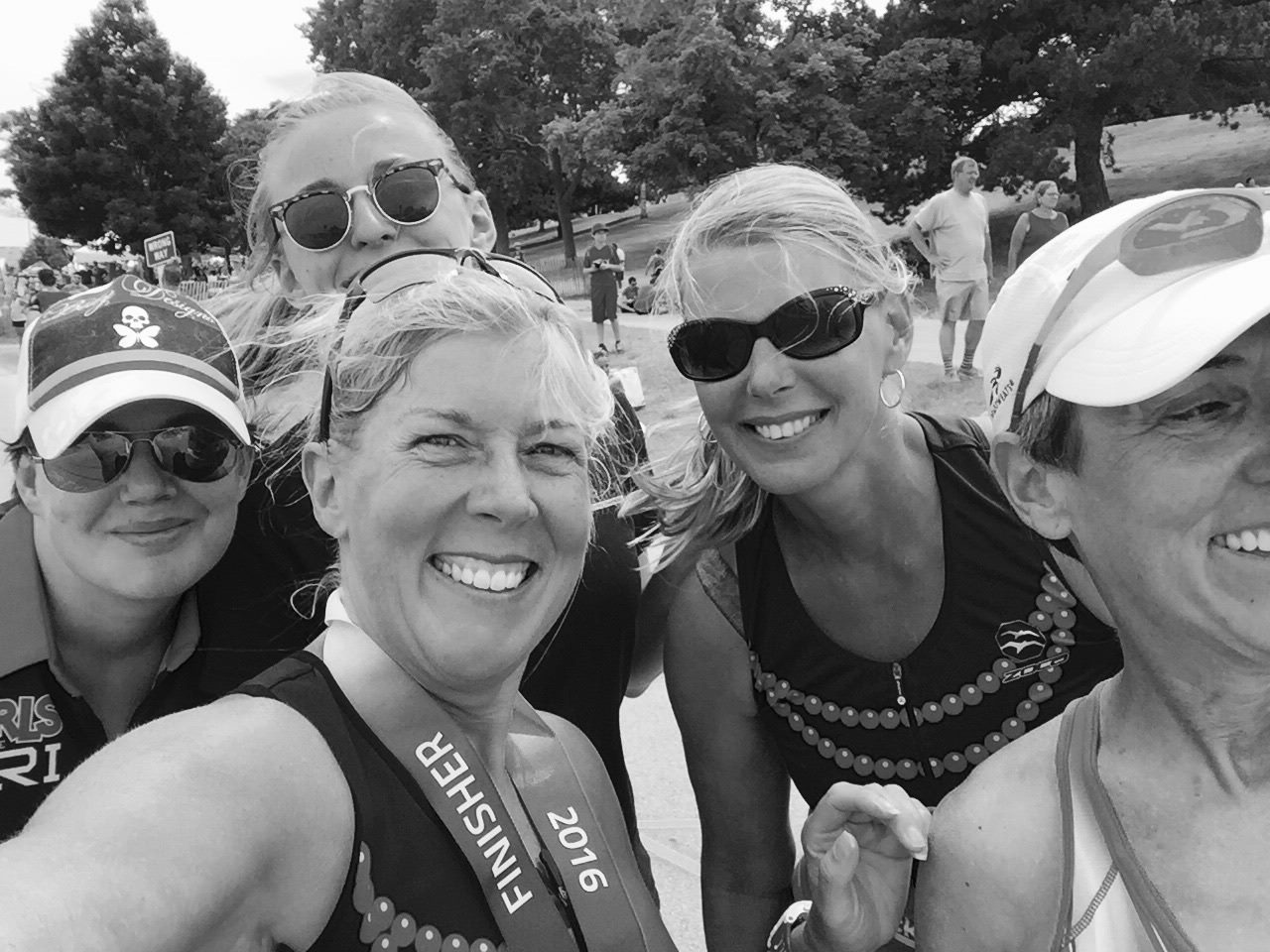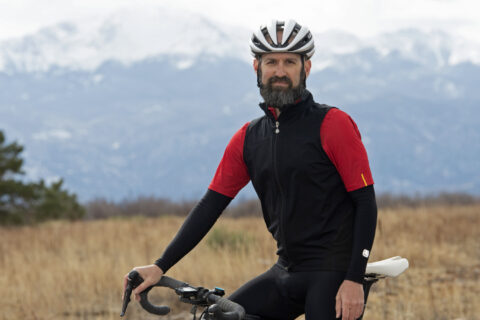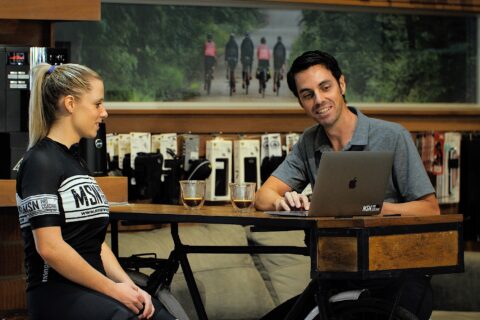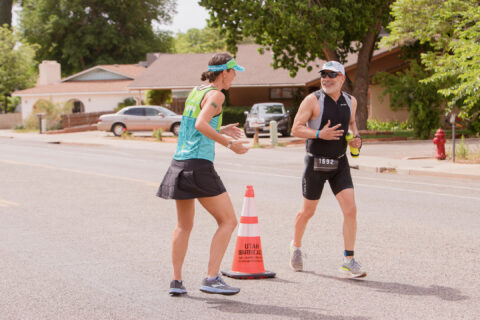Imagine standing at a race start and looking out over the nervous energy of 1,000 athletes. What coach would say, “I’m only interested in coaching the top 200 athletes”? It would be a horrible business model, but many coaches perpetuate this limited view in their own pursuit of performance. In the end, as coaches, we find ourselves stumbling over each other to win the same clients when there’s an additional 80% of the market for the taking.
So there’s the business case for coaching beginners in the sport, but there are other compelling reasons to broaden your market as a coach. Among them, let’s include all of the individuals who have never lined up to race.
Some of the most memorable moments from my coaching career have come as a result of bringing more people into the sports I love through group training and events. Learn-to-swim clinics, micro triathlons to empower women, and clubs for cyclists of all levels have kept me grounded over the years. While I continue to compete at world championships and 20% of the athletes I coach are focused on Kona or a world championship event, I see tremendous value in targeting the full continuum of athletes.
Use group training as a gateway to coaching beginners
It’s short-sighted to restrict your definition of an athlete to someone who is already achieving at a high level. See the athlete in every individual and the possibilities increase exponentially. Get involved in your local community and you can find countless athletes who are receptive to good coaching. These athletes tend to be the most appreciative of your time and energy.
When I held my first 70.3 training program for Girls Gone Tri, I remember lying in bed the night before the race, fearful of what was about to happen. What if every single woman shows up and fails? My worry was somewhat justified as I created this event thinking that it would attract marathoners and short-course triathletes. When the sign-ups first started rolling in, I was surprised to learn that most of these women were first-time triathletes, some didn’t know how to swim or didn’t own a bike, and one brave soul confided that she couldn’t run to her mailbox without gasping for breath.
While I might have been caught off-guard with the sudden prospect of coaching beginners, I was careful to set benchmarks throughout our training to ensure that everyone was prepared for the race. In terms of the swim, for many that meant taking swim lessons, then swimming 1,000 meters without stopping, and getting comfortable with swimming in open water. Six months prior to the event, they also had to demonstrate that they could ride 50 miles within the time allotted, and have enough time remaining to walk or run the half-marathon. Equipped with an individualized race plan, they knew the pace and power required to meet each cutoff.
In the end, every woman crossed the finish line. It was so gratifying to watch, and it also inspired me to continue doing different things.
Collaborate to create a sense of community and competence
As the saying goes, sometimes you have to be the change you want to see. My own community seemed to be prone to exclusive, hyper-competitive group rides. I partnered with the local bike shop to start Valley Velo, a group ride with a simple motto: Don’t be an asshole.
We focused on assembling a team of ride leaders to set the tone, one of whom was a 70-year-old former crit racer. This allowed us to model good skills and courtesy in both competitive and non-competitive rides. Apparently, there was plenty of demand for a club like this and we eventually built up the group to offer five different levels for riders, with our fast ride averaging over 50 riders every week.
Because swimming is such an obstacle for most athletes, I partnered with a fellow USA Masters coach to start a learn-to-competitively-swim clinic twice a week within our masters swim program. We saw athletes make massive improvements with this focus on basic technique. For our advanced swimmers, we partnered with Sheila Taormina, a three-sport Olympian and swim coach. My existing athletes appreciated the access to Taormina’s expertise and the chance to build speed and skills. Ahead of race day, Girls Gone Tri would rent out a lazy river at the local rec center to simulate the open-water experience and teach athletes how to draft and fight for position. By thinking outside of the box, it’s possible to create events that all athletes can participate in in a safe, more equitable way.
Leverage equipment, technology, and education
Coaches can deliver huge value to new athletes by providing guidance on equipment and bike setup. The time that you invest in this will pay off because when the athlete loves the sport, it’s much easier to retain them as a client.
Not too long ago, popular thinking suggested that if a beginner was not competitive, there was no need for them to have a power meter. In reality, beginners need power meters even more than experienced athletes. Many beginners are going to be up against time cutoffs. When they are able to load the course into a virtual training platform and get guidelines on how to manage power, that’s incredibly useful information.
From there, it’s my job as a coach to educate beginners on the how and the why of the training we will do. Even in working with a new athlete, it’s critical that my client understands and buys into my coaching methodology, with a commitment to the Zone 2 aerobic work that builds an adequate base of fitness to support progression.
I also invest significant time in showing new athletes how to use TrainingPeaks. Their workout data is key to unlocking potential. I want them to know how to receive that feedback. If an athlete engages with the data, they will learn more about their body throughout the training process, and better interpret the body’s response. I take pride in the fact that the women of Girls Gone Tri became TrainingPeaks users.
As a coach, we need to teach new athletes how to change their physiology, which is no small thing. The athlete will get more out of their training if they are in step with their coach, engaged with the data, and committed to the process of learning.
RELATED: Craft of Coaching Module 4 // The Business of Coaching
Learn how to be a better coach
As coaches, there’s a lot for us to learn from the process of working with new athletes. We have to continually adapt training to the needs of each individual athlete and focus the purpose of every session to bring their goal into view.
Several years ago a man with multiple sclerosis asked me to coach him. He had started running at age 55, but he wanted to complete a marathon and wasn’t sure he could do so within the time cutoff. I set him up with a walk-to-run program, unsure of what the outcome might be. There were many challenges because he was not the same athlete every day given the effects of MS. Some challenges were easier than others—there was no training program to follow, navigating recovery was paramount, and we needed to find events without bridges to mitigate balance issues that he faced due to his MS. In the end, he overcame every barrier, running five marathons in a single year and beating the cutoff in each of them. Best of all, his MS symptoms decreased as a result of training. I was a better coach for having worked with this athlete.
I’ve taken lessons from my own athletic pursuits and from working with elite athletes and applied them to coaching beginners. The application goes both ways—my most accomplished athletes have benefited from what new athletes have taught me.
It seems only logical that striving to coach a more diverse group of athletes—young and old, fast and slow, new and experienced—puts you on a path to becoming the best coach that you can be.





